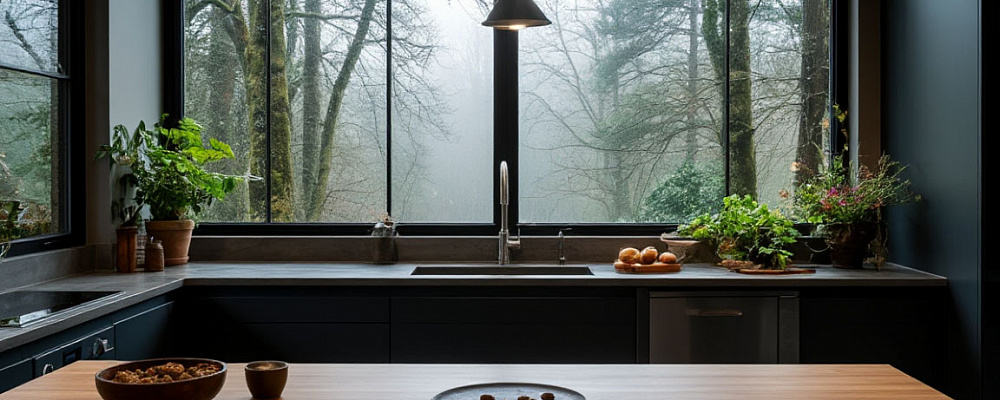Top 5 Mistakes in Kitchen Renovation and How to Avoid Them

1. Neglecting Proper Planning
Why Planning is Crucial
One of the most common mistakes in kitchen renovation is diving into the project without a clear plan. Many homeowners get carried away by the excitement of choosing cabinets, countertops, and appliances, forgetting to consider the overall layout and functionality of the space. Without a detailed plan, you risk ending up with a kitchen that looks great but doesn’t meet your practical needs.
How to Avoid This Mistake
Start by assessing your current kitchen and identifying what works and what doesn’t. Think about your cooking habits, storage needs, and the flow of movement in the space. Create a detailed layout that includes the placement of appliances, cabinets, and work zones. Consulting with a professional designer or contractor can also help you avoid costly errors and ensure your kitchen is both functional and beautiful.
2. Overlooking Electrical and Plumbing Systems
The Importance of Proper Infrastructure
Another major pitfall is failing to address the kitchen’s electrical and plumbing systems during the renovation. Many people focus solely on the aesthetics, forgetting that the kitchen is one of the most utility-heavy spaces in the home. Poorly planned electrical outlets or plumbing can lead to inconvenient layouts, safety hazards, and expensive repairs down the line.
How to Avoid This Mistake
Before starting the renovation, have a licensed electrician and plumber inspect your kitchen. Ensure there are enough outlets for your appliances and that they are placed in convenient locations. Plan for proper lighting, including task lighting for work areas and ambient lighting for the overall space. For plumbing, consider the placement of sinks, dishwashers, and refrigerators to ensure efficient water flow and drainage.
3. Choosing the Wrong Materials
Why Material Selection Matters
The materials you choose for your kitchen can make or break the renovation. Many homeowners opt for cheaper materials to save money, only to find that they don’t hold up to the wear and tear of daily use. On the other hand, some people splurge on high-end materials that may not be practical for their needs.
How to Avoid This Mistake
When selecting materials, prioritize durability and ease of maintenance. For example, quartz countertops are a great alternative to marble because they are more resistant to stains and scratches. Similarly, opt for cabinets with high-quality hinges and finishes that can withstand frequent use. Always research the pros and cons of each material and consider your lifestyle before making a decision.
4. Ignoring Lighting Design
The Role of Lighting in a Functional Kitchen
Lighting is often an afterthought in kitchen renovations, but it plays a crucial role in both functionality and ambiance. Poor lighting can make it difficult to cook, clean, and entertain, while the wrong type of lighting can create an uninviting atmosphere.
How to Avoid This Mistake
Incorporate a layered lighting design that includes ambient, task, and accent lighting. Ambient lighting provides overall illumination, while task lighting focuses on specific work areas like countertops and the stove. Accent lighting can be used to highlight design features, such as a backsplash or open shelving. Use energy-efficient LED bulbs and consider installing dimmer switches for added flexibility.
5. Underestimating Storage Needs
The Consequences of Insufficient Storage
A lack of storage is one of the most common complaints among homeowners after a kitchen renovation. Without adequate storage, your kitchen can quickly become cluttered and disorganized, making it difficult to find what you need when you need it.
How to Avoid This Mistake
Maximize your storage space by incorporating smart solutions like pull-out shelves, lazy Susans, and vertical storage. Don’t forget to utilize underutilized areas, such as the space above cabinets or under the sink. Custom cabinetry can also help you make the most of your kitchen’s layout and ensure everything has its place.
Conclusion
Renovating a kitchen is a significant investment, and avoiding these common mistakes can save you time, money, and frustration. By planning carefully, addressing infrastructure needs, choosing the right materials, prioritizing lighting, and maximizing storage, you can create a kitchen that is both functional and beautiful. Remember, a successful renovation is all about balancing aesthetics with practicality, so take the time to think through every detail before you begin.

